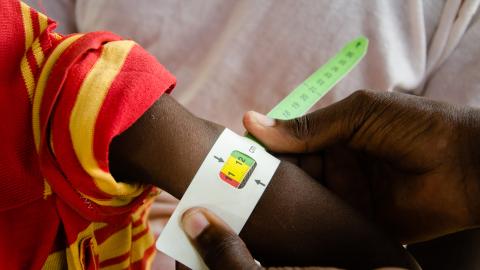
Complementary Feeding
Complementary Feeding
Effective programmes promoting complementary feeding could reduce deaths of children under five years by about six per cent in developing countries.*
Importance of Complementary Feeding
The nutritional needs of an infant from age six months onward can no longer be met with breast milk alone. To ensure adequate energy and nutrients, an infant’s diet must be gradually expanded to include complementary ‘family foods’. The term ‘complementary’ is important – these first foods complement breast milk, but do not replace it. Continued breastfeeding for up to two years or beyond provides an essential source of energy and nutrients in the child’s diet. Even with appropriate breastfeeding, mortality rates and levels of stunting and anaemia will not be decreased unless mothers or caregivers provide appropriate complementary foods to their infants starting at six months of age. Most stunting occurs in the first two years of childhood, when there is a simultaneously high demand for nutrients and high rate of infectious diseases. Preventing infants and children from becoming undernourished is more effective and cost-efficient than treating children who are already moderately malnourished. World Vision stresses the importance of ensuring adequate quality of complementary foods, and adequate frequency of complementary feedings, starting with two or three feedings per day when the child is six months, and increasing to three or four feedings per day plus snacks when the child is nine to 23 months. For households in most developing countries, this means increasing the typical number of feedings per day. A variety of food, including micronutrient-rich foods, is also important to ensure the adequate intake of all nutrients for young children during these critical years of development.
UNICEF Infant and Young Child Feeding provides global status updates on country-level infant and young child feeding (IYCF) trends.

Fortified Complementary Foods
"Nutrition is the basis of all our interventions with the children... if we don’t address adequately the nutritional needs of the children, our interventions may be jeopardised and the desired impact on the children’s condition jeopardised... Addressing the nutritional needs of our children means that we will be targetting the child in the context of his or her family and his or her community."
- Wesley Charles, former National Director, World Vision Haiti
Often, locally available foods do not have sufficient micronutrient content to meet infants’ daily dietary requirements and centrally fortified foods are not available or affordable. World Vision promotes fortification of complementary foods, mainly through home fortification with micronutrient powders.
Better Practices examples of fortified complementary foods are provided under Iron for Young Children.
* Source: Disease Control Priorities Project. Fact Sheet: Eliminating malnutrition could reduce poor countries’ disease burden by one-third, July 2007, http://www.bvsde.paho.org/texcom/nutricion/DCPP-Nutrition.pdf